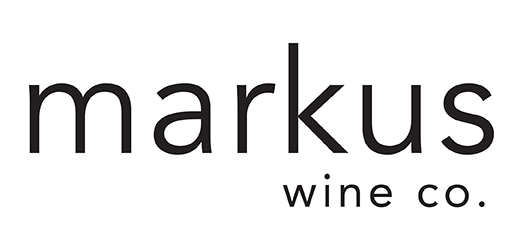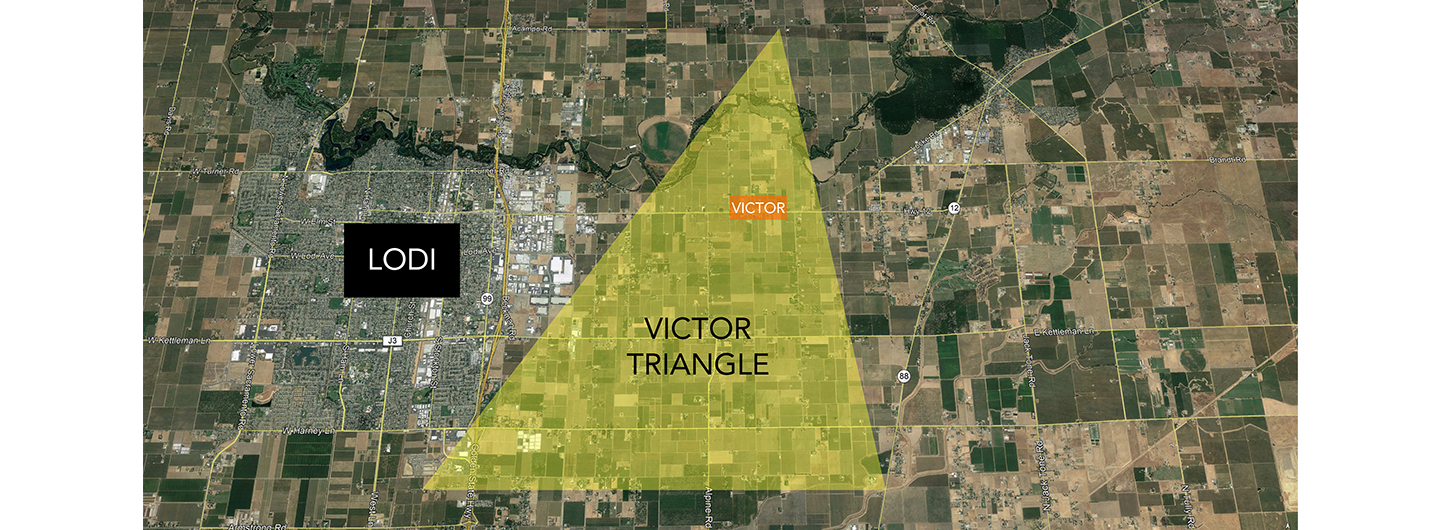A recap of the key milestones of the 2023 winegrowing season based on data from a weather station near our winery in Victor, California, east of Lodi.
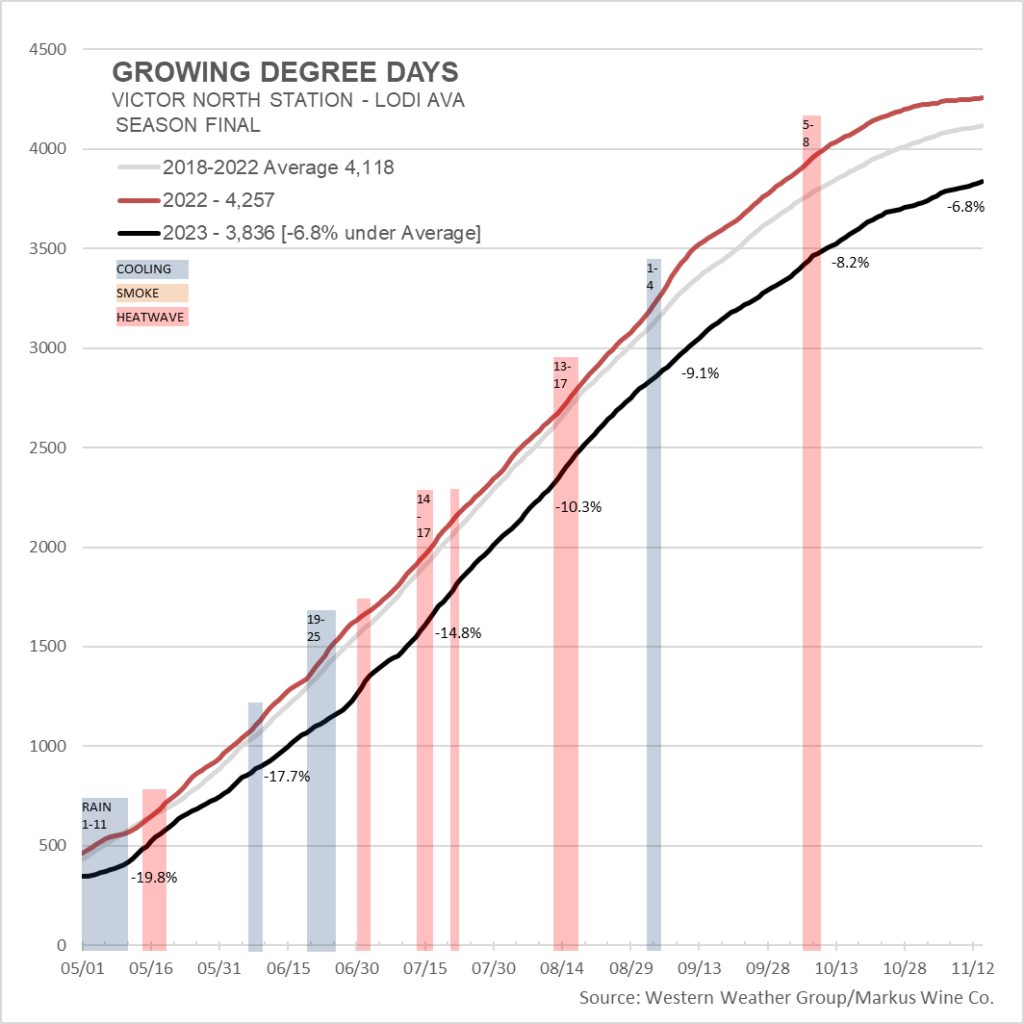
Summary
From a grape growing point of view, the year got off to a warm, dry start, leading into a fairly optimal summer. That all changed with the arrival of a record-breaking mid-August heatwave and massive wildfires with widespread smoke that fortunately did not affect the Lodi crop, other than shade us from higher temperatures. The record heat kept the area up to 7% above average for the remainder of harvest, including all red varieties. To handle the heat, most growers were forced to irrigate, leading to generally lower levels of acidity and sugar. As fermentations complete, we will have a better appraisal of the quality of the vintage.
January through April
The most memorable factor this winter is what didn’t happen. Take a look at the chart below, showing the daily rainfall as dark blue columns:
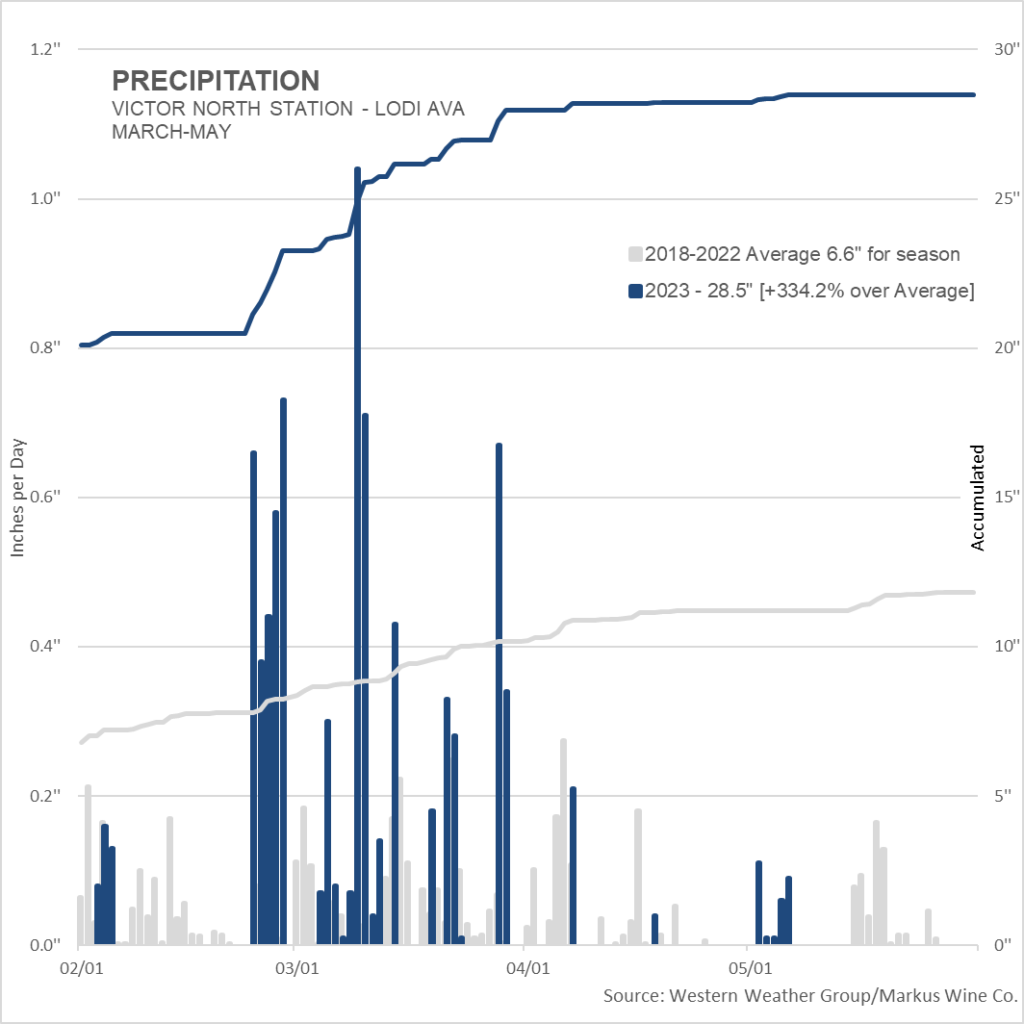
We were already behind on seasonal rainfall accumulation at the end of January, but then after receiving a hundredth of an inch on February 1, there wasn’t a drop of rain through February until March 7 – 33 days of no rain. You can see by the gray bars that we normally average a significant portion of our annual rainfall during February. If it weren’t for good storms in mid-March and early April, we would have been in much worse shape.
And, predictably, the snowpack was about half of what it normally would be by mid-March:
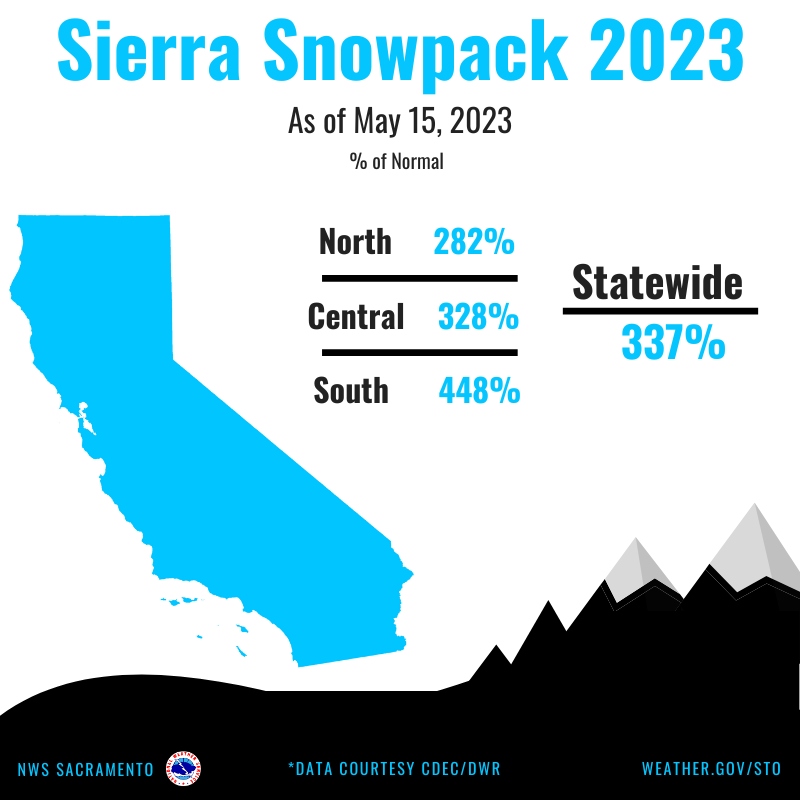
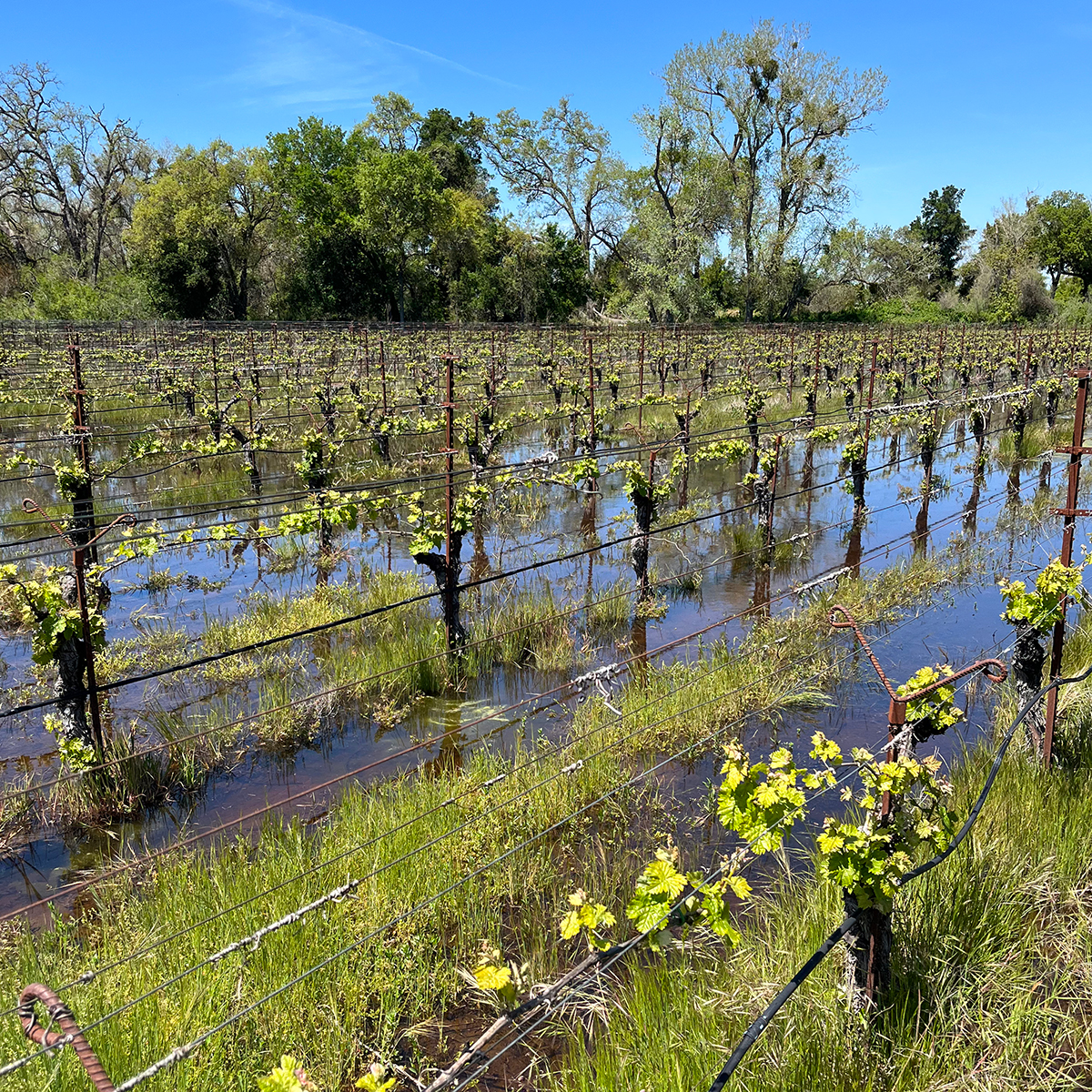
March is when the majority of bud break occurs. The lack of cloud cover contributed to pre-bud break temperatures that were above normal:
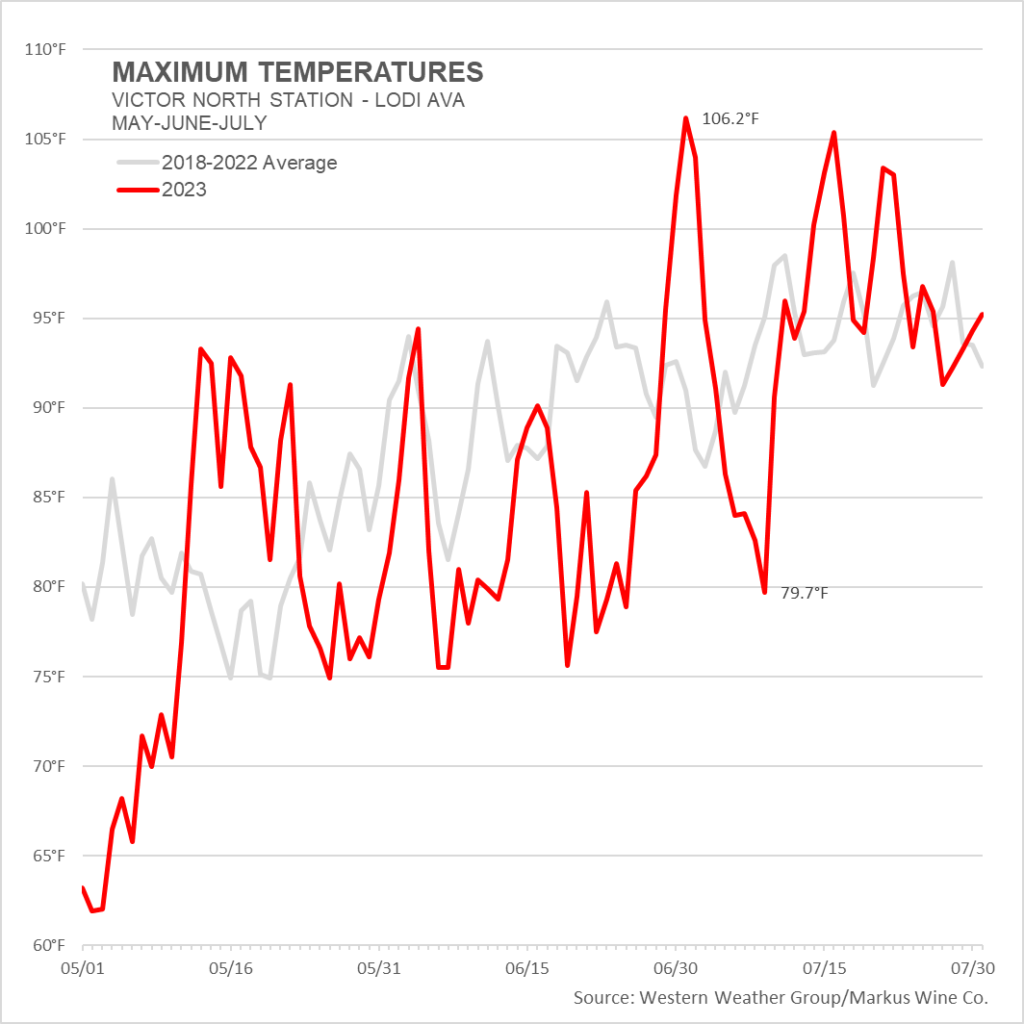
Despite the lack of rain and warmer weather, bud break started pretty much on time.
March is also when we all finally took the COVID-19 pandemic very seriously. On March 15, the Governor of California required the closure of all California winery tasting rooms, bars, nightclubs and brewpubs. Several days later, on March 19, 2020 the Governor further directed California residents to stay at home. By then, our San Joaquin County had only 17 cases of COVID and 2 deaths, much better than the devastating situation affecting New York.
Lodi wineries shifted to taking more phone and website orders than ever before. Wine orders were mostly available for curbside pickup at the tasting rooms, and some winemakers personally delivered orders to customers at home for no charge. Those wineries that sold through distribution to grocery stores saw large increases in sales. Restaurant sales unfortunately dropped nearly to zero as they could only serve food via take-out.
April usually brings damaging frost, but, fortunately, we made it through the month with almost textbook-perfect growing conditions: temperatures up into the upper 70s and mid 80s, with a few days of light rain, and no frost or hail.
May through July
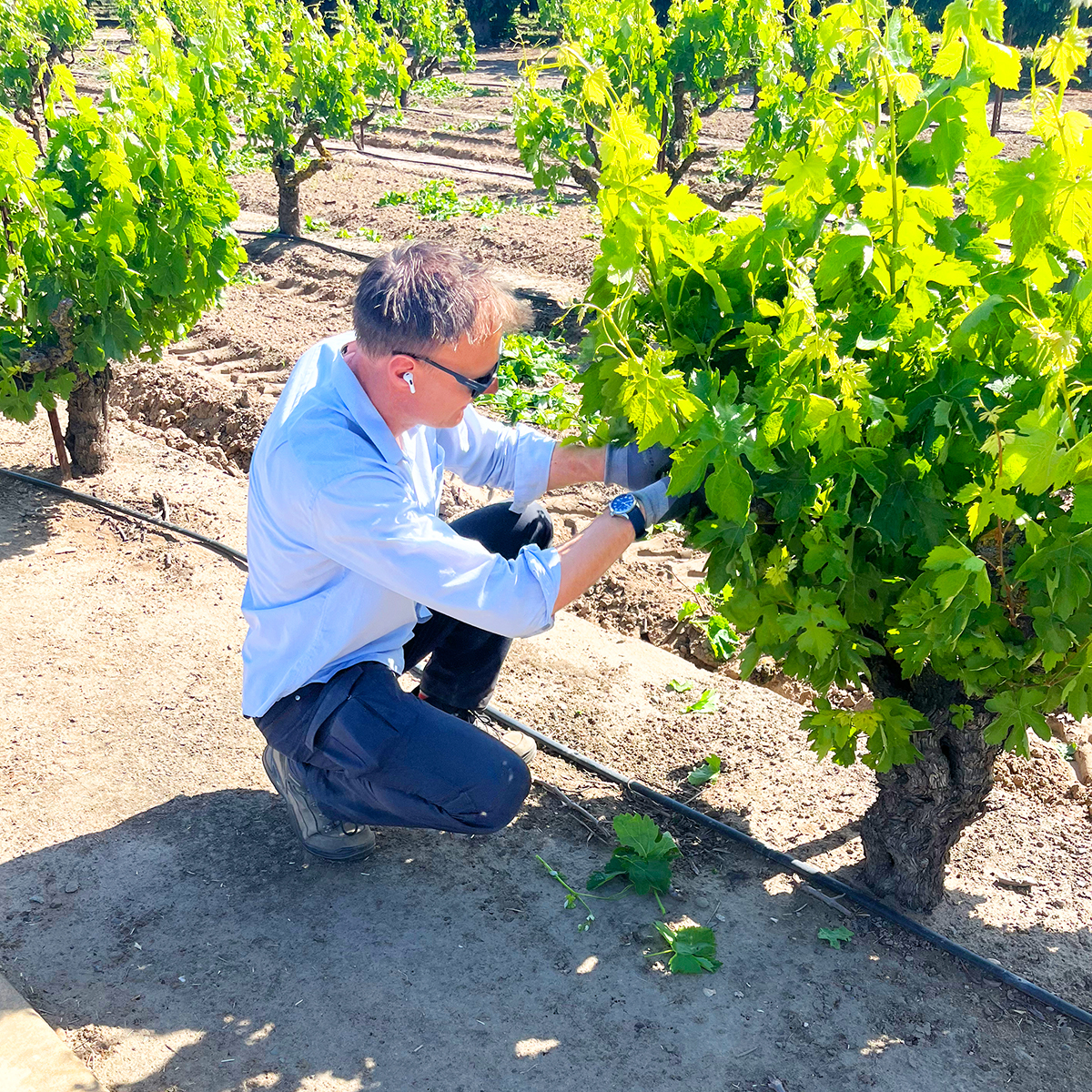
During the weekend ZinFest would have taken place, May 17-18, a low-pressure system dropped straight down the west coast delivering a half-inch of rain and cooler weather just as bloom was coming to a close.
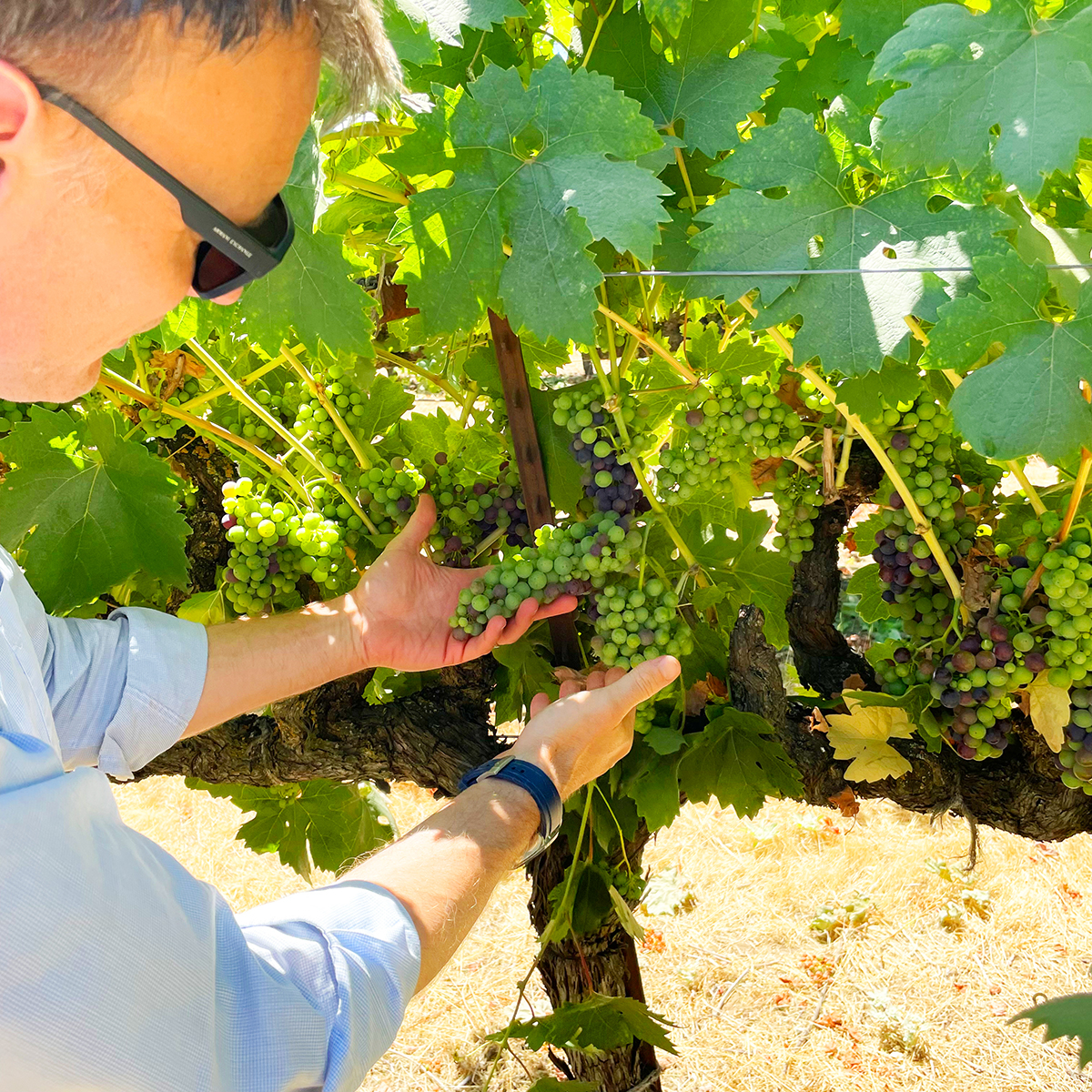
Typically, rain can disrupt pollination, causing some flowers to not pollinate and drop off as “misses”, or causing sub-optimal pollination, resulting in small “shot-berries” or a cluster looking like a bunch of “hens and chicks.”
Normally we’d be fairly concerned about fruit-set and what clusters might look like. But with the uncertainties of COVID and an oversupply of bulk wine from previous vintages, we welcomed some natural crop thinning.
The additional May rain notched us up to 7.9 inches total for the rain season, compared with last year’s 21.3 inches and the 2016-2019 average of 20.4 inches, making for 39% of normal rainfall. Luckily the reservoirs still had healthy reserves from last year.
For years, the month of May had been a predictably nice, dry and warm portion of the season, but last year we nearly had snow, and this year we had rain and a heatwave.
California, as a whole, did somewhat better:
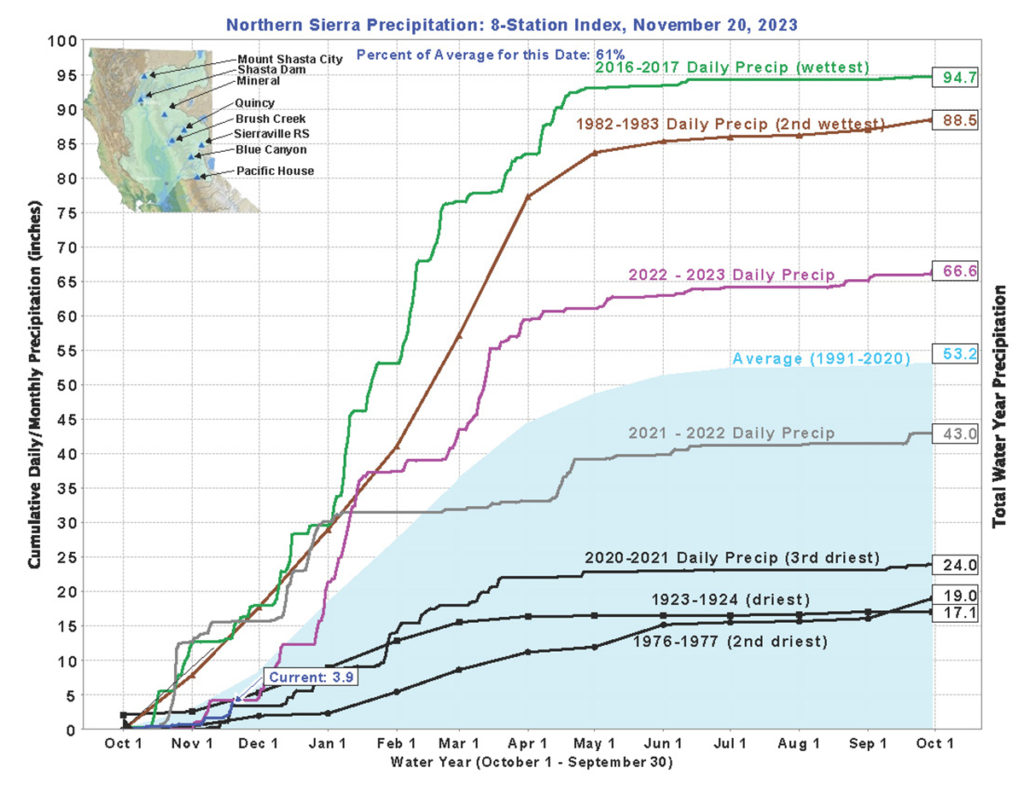
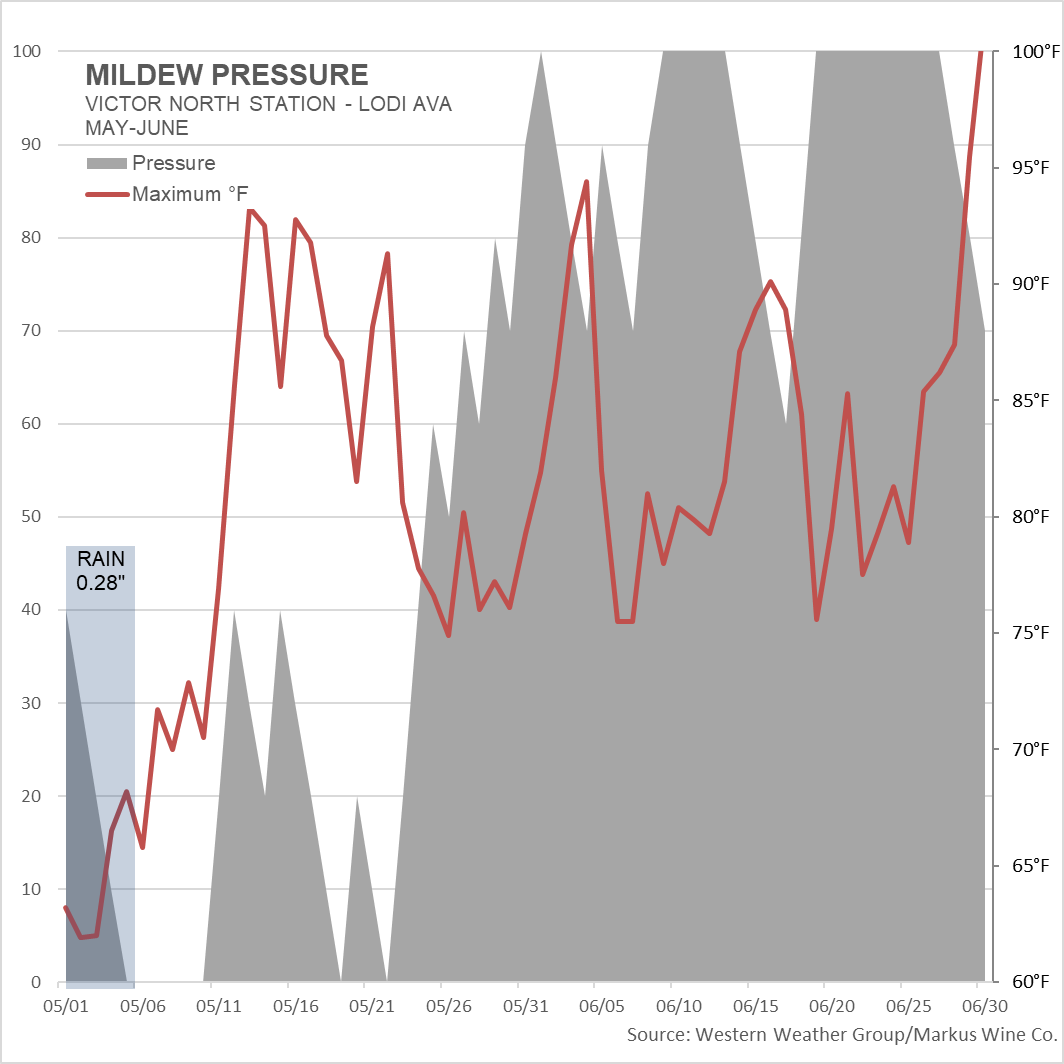
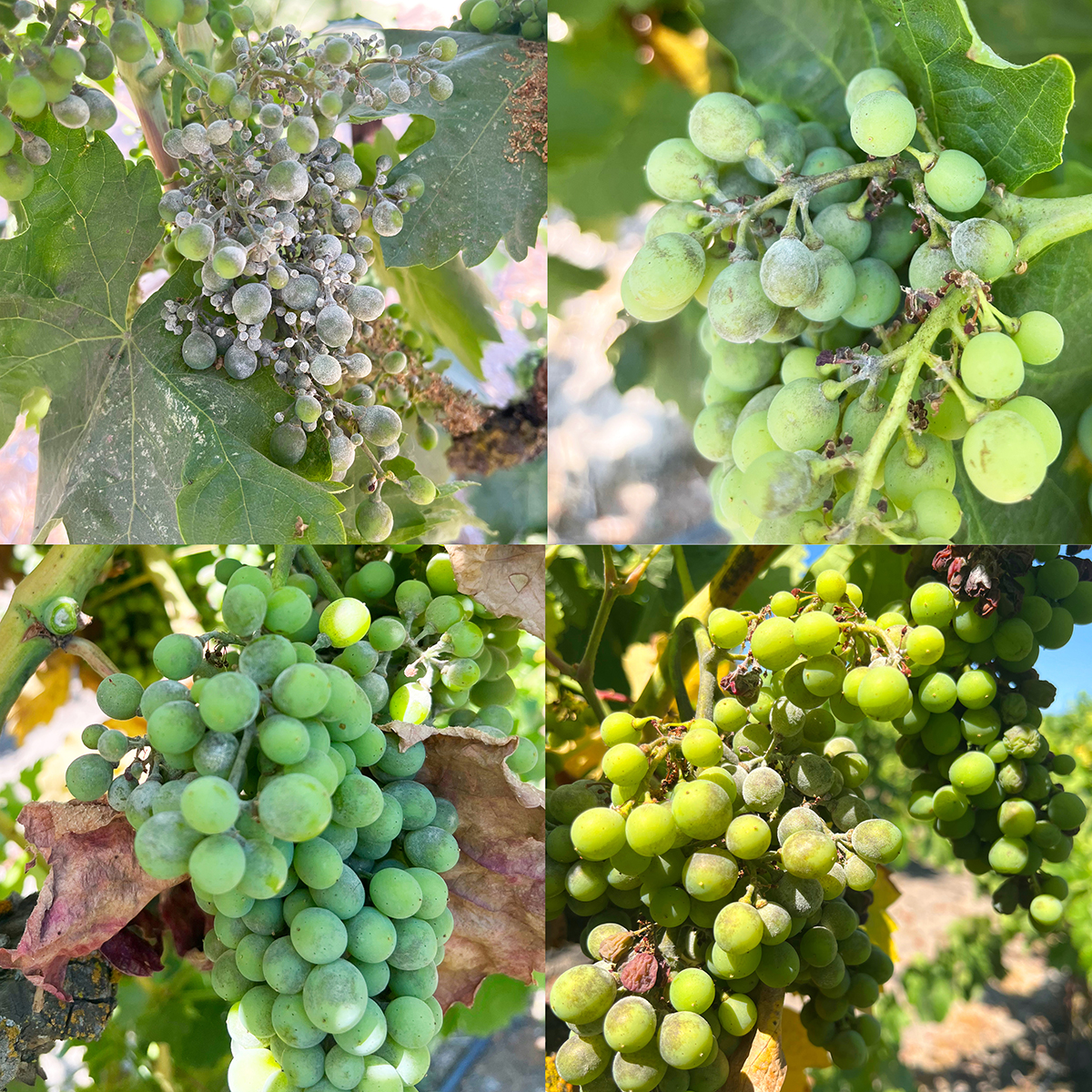
Within a week of the rain, we were hit with a short heatwave, reaching 101.8 degrees F on May 27. That heat lifted the Growing Degree Days (GDD) above average.
Meanwhile, after having flattened the initial curve of COVID cases, on May 25 our Governor began allowing the reopening of selected business sectors. In early June, wineries were allowed limited indoor tasting. Unfortunately, citizens tired of being cooped up took the new sense of freedom and went against guidance to gather for family get-togethers over the Memorial Day weekend, then for Father’s Day. Case counts rose dramatically after the incubation delay, forcing the Governor to once again close bars, then indoor winery tasting on July 13. Lodi wineries rearranged operations and permits to more permanently serve customers outdoors.
In the fields, the vines were using the heat and enough water in the ground to send out longer shoots and laterals that had to be thinned. We spent quite a bit of time pulling fruit-zone leaves to open up the canopies to let in light and air to help with ripening and hinder powdery mildew.
Fruit set for all varieties looked good with normal sizing-up. Crop size was good, not over-cropped. Sulfur spraying was regular – every 10 days – and unexciting.
First sign of color in the skins was toward the end of June, on schedule. We dropped green fruit to balance the crop load where needed, not quite as much as usual.
Veraison finished up during the later part of July. Berry size was looking smaller than last year and we estimated crop size to be down about 10%. Light irrigation was applied during hotter days in July.
We noticed the first social media posts showing harvest on July 30, when LangeTwins Winery brought in Chardonnay from their River Ranch vineyard block. The pick was made at night and was presumably at low pH for sparkling wines. Harvest continued daily/nightly from that day on, mostly focused on grapes for sparkling wines.
And then came…
August
The first two weeks of the month were ideal – temperatures slightly below season averages, with clear, sunny days. The famous cooling Delta Breeze was helped by a low pressure system that repeatedly moved a bit inland then back out to sea. We were watching the GDD curve move down closer to the long-term average, most thankfully.
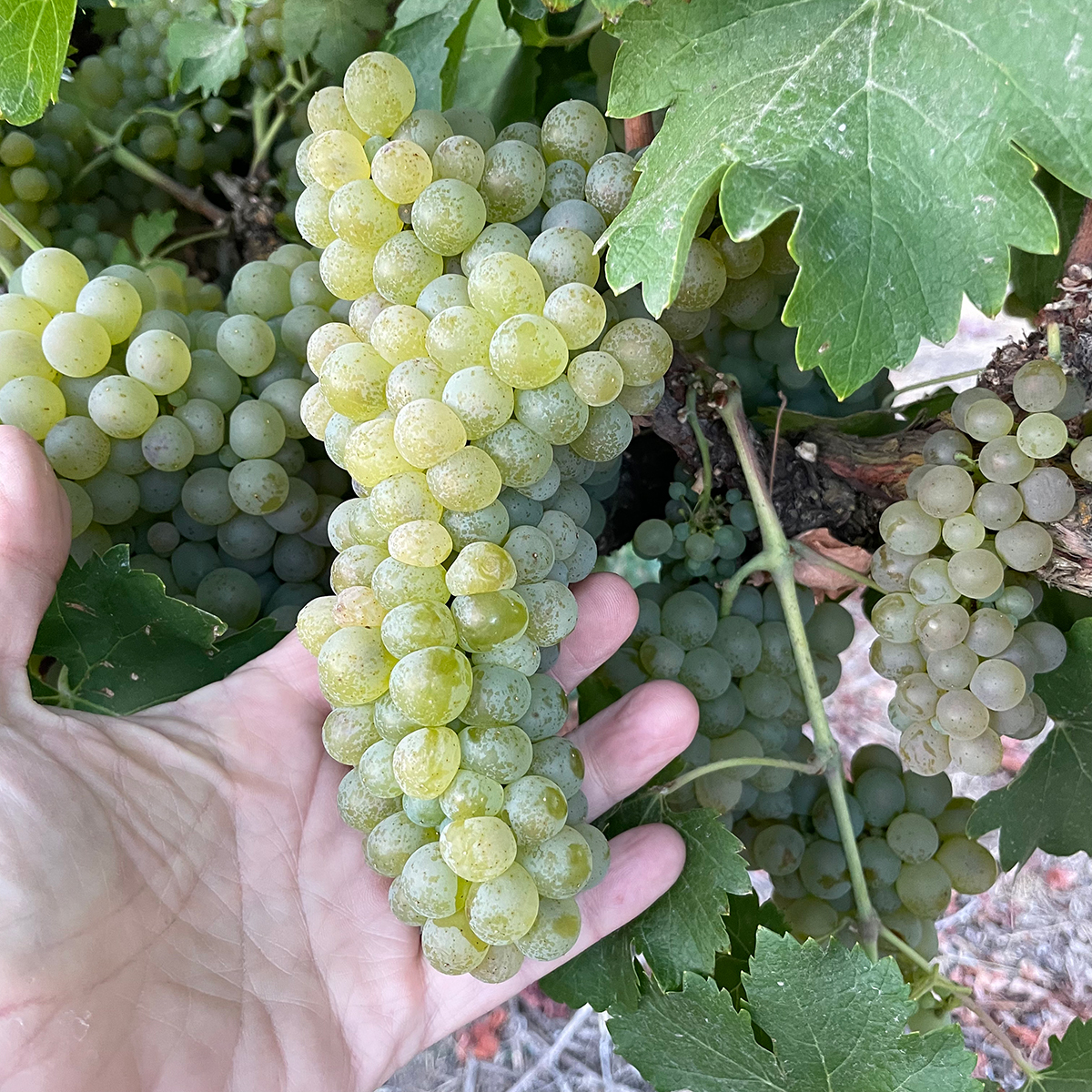
Then Thursday, August 13 arrived, bringing back triple-digit temperatures and the start of a record-breaking heatwave over most of California:
Here’s the forecast we were looking at, showing 5pm temperatures over 100 degrees F expected to last until nearly the end of the month:
This was to be 7-10 days in a row of over-100-degree heat brought by a high pressure ridge expanding northwestward from Arizona, pushing that low pressure system further off shore. Normally, we experience only two or three days of rising and falling heat before the Delta Breeze returns to bring us back down into average temperatures.
Knowing the heat was coming, many wineries brought in whites, such as Chardonnay, Sauvignon Blanc and Albariño, that were ready to pick – or at least close enough. (The alternative would be to water those vineyards back to prevent the fruit from desiccating.)
As predicted, we hit 103.8 degrees F on Friday, 105.0 on Saturday, and 109.5 – our highest for the year – on Sunday. Also on Sunday, Death Valley hit 130 which could be certified as the hottest reliably-measured temperature in world history. (Death Valley previously hit 134 on July 10, 1913, measured with less-sophisticated equipment.)
Over the weekend, as the hot high pressure system rotated clockwise, it drew the off-shore low northward:
Scattered mid- and upper-level cloudiness, remnants of eastern Pacific Hurricane Fausto, moved onshore following the coast up from the south, through Santa Cruz and continuing northeastward over the entire Bay Area. The combination of clouds and heat contributed to record high minimum temperatures in the 70s.
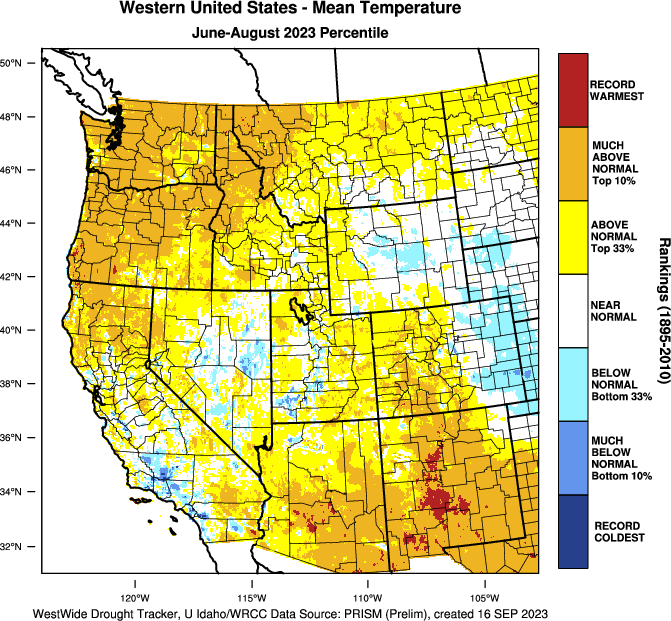
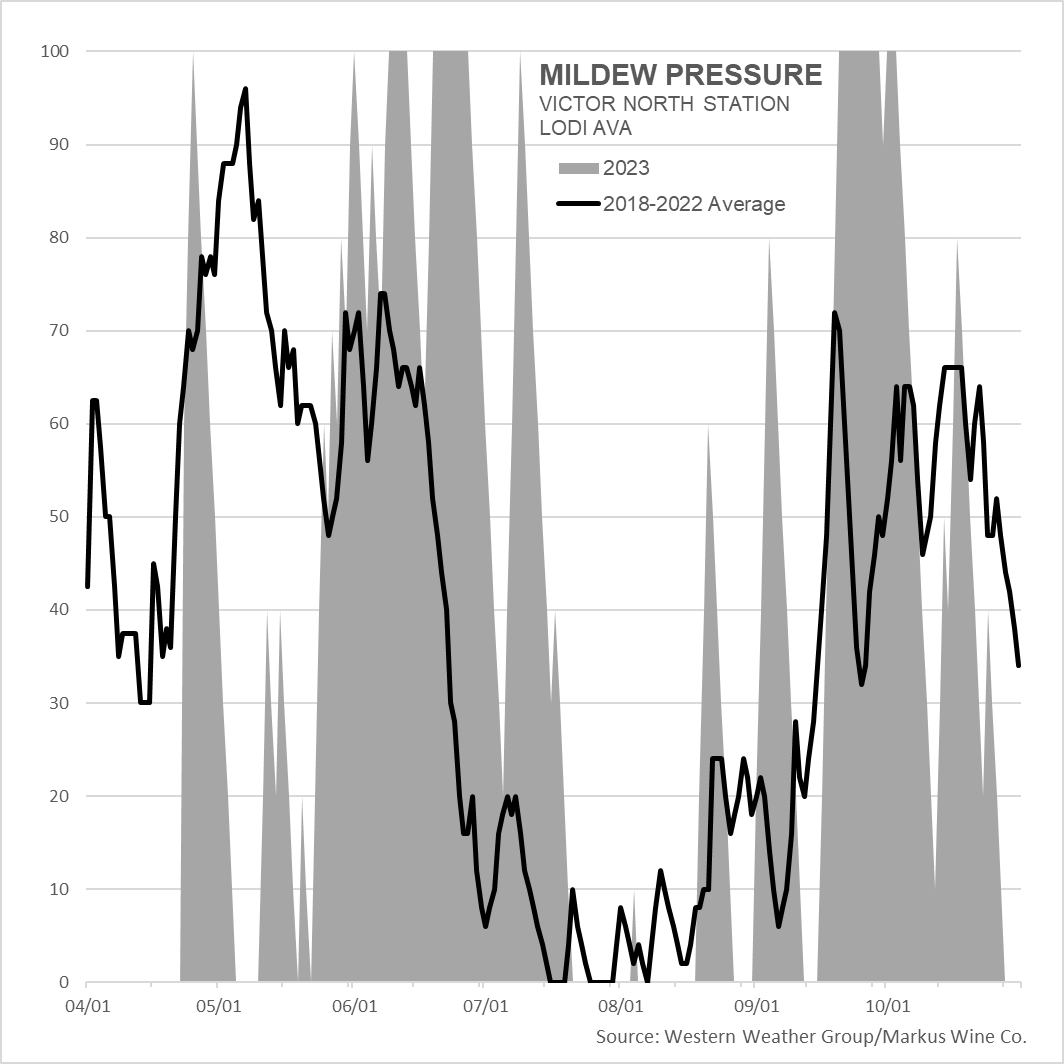
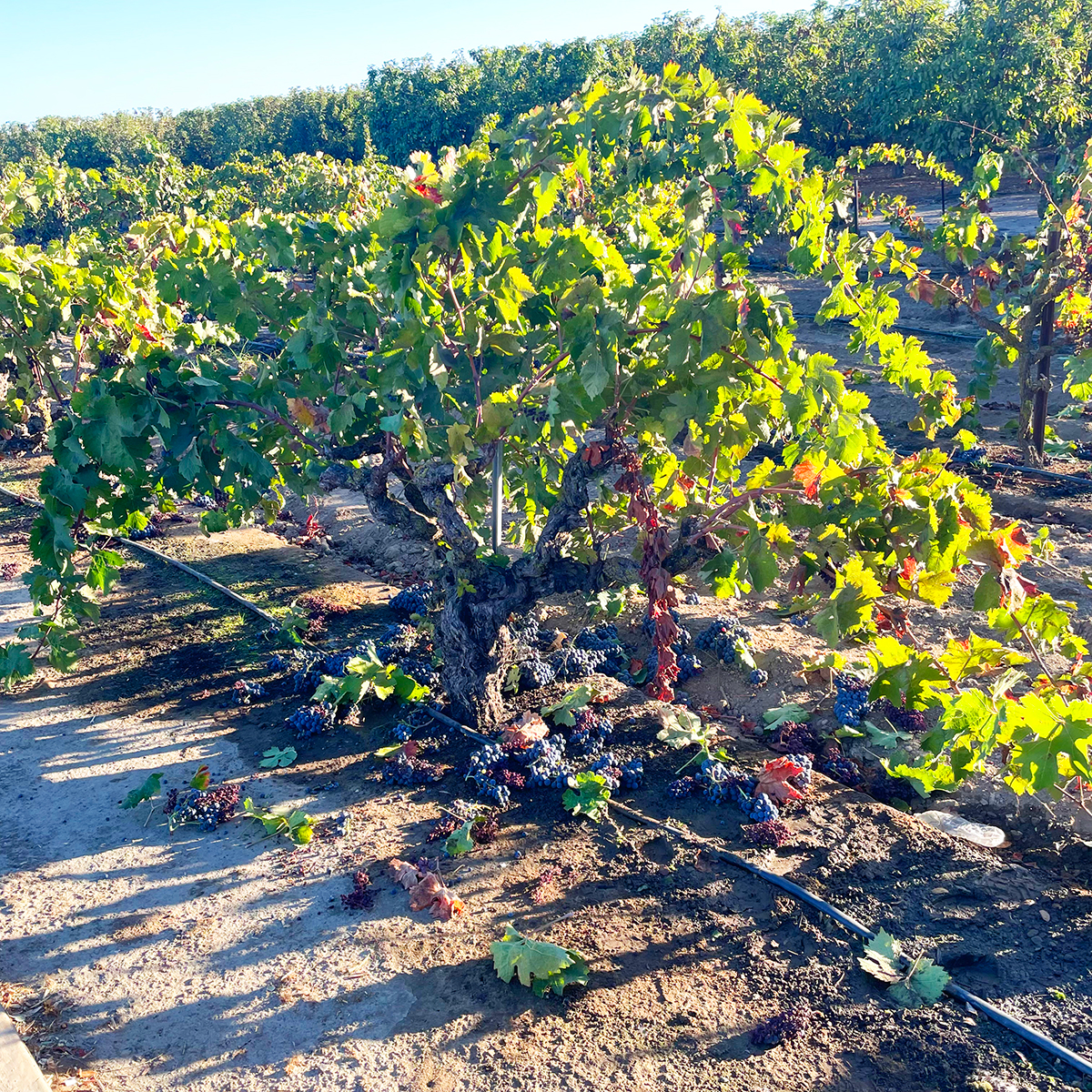
For grapes still on the vine, the heat changed grape chemistry, such that it is hard to predict the remainder of harvest timing. But even before harvest, the overall higher GDD accumulation and observations from the field of a projected lighter crop had us all expecting that harvest would be earlier than average.
It is interesting to look at how the diurnal variation might have changed during the heatwave:
During August, our diurnal variation over the 2016 through 2019 vintages averaged a drop of 37 degrees F off of the maximum of the previous day. This year, most of August had drops of a little less than average. It is hard to say if this was due to the heatwave and smoke, or if other factors contributed to the change.
This month turned out to be the hottest August on record in California history, with records going back to 1895.
September
We had some amount of light smoke most days during the first week of the month.
Harvest crews were very busy, but available. Some modifications have been made to protect against COVID. Otherwise, we have yet to see serious impacts of the virus on operations in the field or the winery. By the beginning of the month, San Joaquin County had over 18,000 cases and 368 deaths recorded and was rated in the highest “widespread” tier in California’s status for risk.
Another record-breaking heatwave for California arrived over Labor Day weekend, starting on Saturday, September 5 with 101.3 and 106.3 at Victor on Sunday, while the nearby normally cool Bay Area actually suffered even warmer temperatures than us:
On Monday, September 14, an off-shore low pressure system brought back the Delta Breeze and skies cleared noticeably of the smoke. Previously, due to a lack of sufficient wind, the smoke had been accumulating in the Central Valley from many distant fires, continuing to depress daytime temperatures.
October
Smoke from the many Northern California fires was a little more noticeable on Thursday morning, October 1. Pre-dawn, we could see the full moon with a light sepia shade, along with Mars, Venus, Sirius but no other stars. The smoke shaved about 3 degrees off the forecast high. It wasn’t until Sunday that the stars were back on display followed by mostly blue skies and only a slight smell of smoke in the air.
We finished picking Cabernet Sauvignon on October 8, and other Lodi wineries are finishing up with this variety – usually one of the last of harvest – that week.
From the October 2020 Ciatti Global Market Report:
As across the state, yield in the Central Valley is
estimated to have come in 10-20% lighter than the
average. The Valley’s crop potential has looked lighter
throughout the growing season and this lighter estimate
does not include the impact of smoke exposure because
it has been much less of a concern in this region –
and in the southern Valley in particular – than on the
Coast. The Valley has seen very few rejections of grapes
because of smoke exposure concerns.
Like August and September, this ended up being the hottest October ever in California. October was also completely dry, whereas we normally get our first storm in the first half of the month.
Looking Ahead (at least trying to)…
It felt like we snapped straight from summer to winter when the nice, mild temperatures abruptly dropped from a high of 81.8 degrees F on November 5 to 64.1 the next day, followed by a few frosty nights. Then on November 13, we received our first 7/10″ of rain of the season, accumulating about a quarter of an inch by the 18th from a series of storms that helped the northwest and Sierras more than our area. (An EF1 tornado touched down around 2pm on the 18th between Oroville and Concow and did some minor damage.)
The forecast for the remainder of November may have a little more rain, but the long-range models point to a drier than average winter.
We’ll come back later to provide an update on the quality of the fruit, plus crop sizes in February when the Crush Report is released.
In any case, we’re hoping for the best fruit possible for us and for all of you!
About Victor North Station
The Victor North weather station is located within Katushas’ Vineyard, planted in 1915 and owned by Bedrock Wine Co.
The station is a third of a mile from the source of most of our white wines, Mokelumne Glen Vineyards, and just over a mile north of our winery in the hamlet of Victor, California. Victor is about 3 miles due east of the City of Lodi.
Data is automatically uploaded daily via the Western Weather Group and sponsored by the Lodi Winegrape Commission.
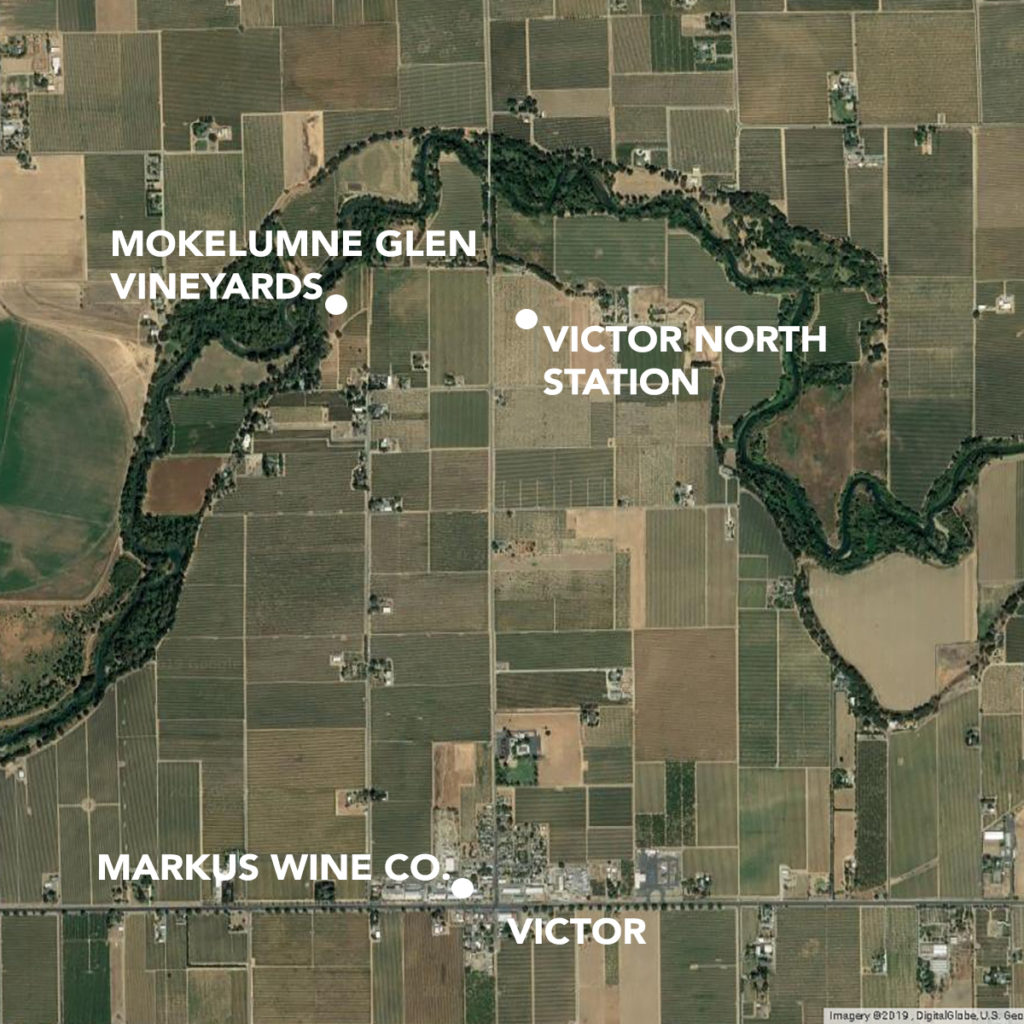
For Wineries
We purposely make extra wine and bottle it as shiners. We offer the wine for sale most of the year. We also source and sell Lodi winegrapes.
Please check out what we have to offer:
BULK & SHINERS GRAPESPast Reports
Thanks for reading!
